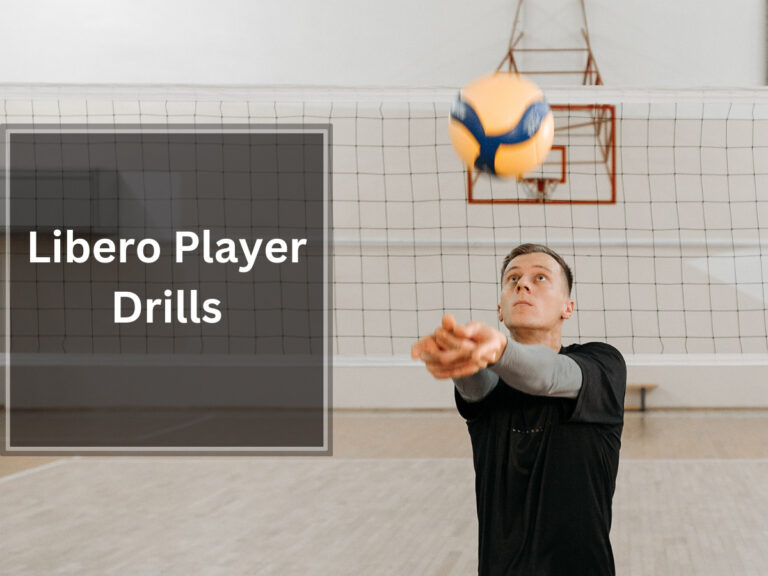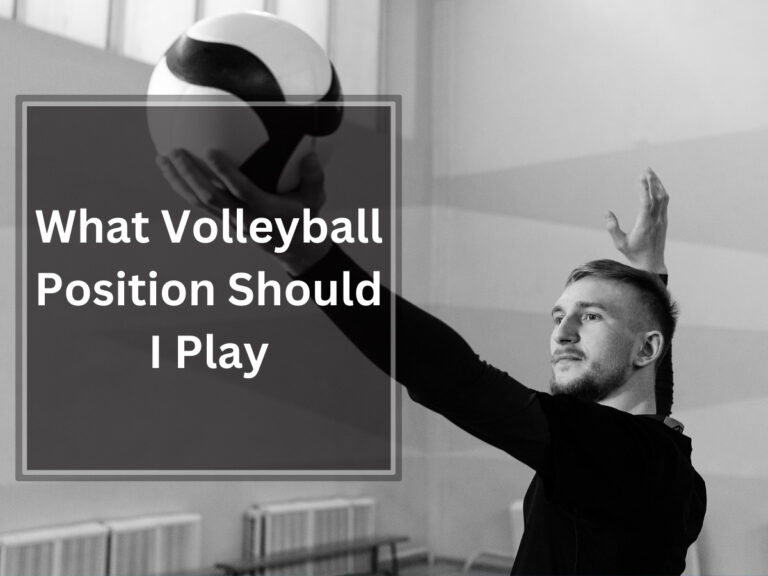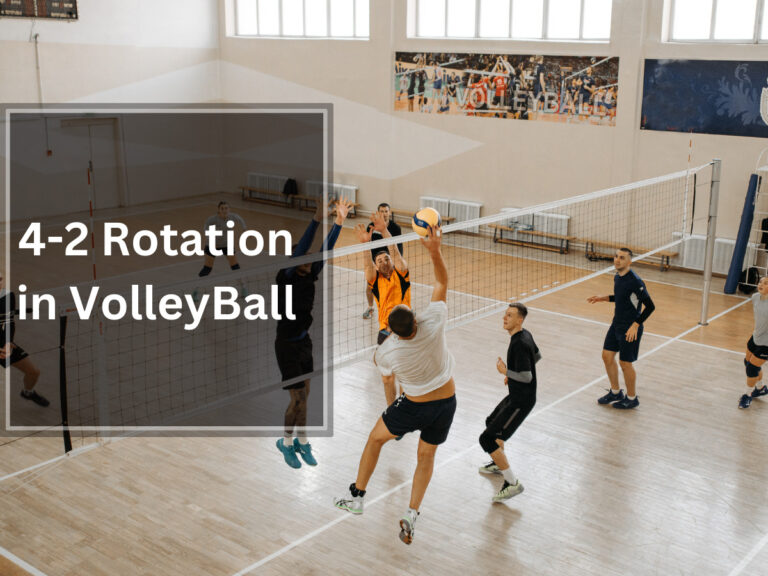Understanding Volleyball Net Height and Regulations

Volleyball is a sport that demands precision, technique, and strategy. While we often marvel at the agility and power of players, one crucial element that significantly influences the game is the height of the net.
Whether you are a casual player, a coach, or someone interested in the mechanics of the sport, understanding volleyball net height is essential to foster fair and exciting gameplay. In this article, we will delve into the various aspects of net height, its impact on the game, and the guidelines for setting it up correctly.Did you know that volleyball net height varies depending on the type of volleyball being played?
In beach and indoor volleyball, the men’s net height is 2.43 meters (7 feet 11 5/8 inches), while the women’s net height is 2.24 meters (7 feet 4 1/8 inches). Snow volleyball follows the same regulations as well.
However, sitting volleyball has different net heights, with the men’s at 1.15 meters (3 feet 5 inches) and the women’s at 1.05 meters (3 feet 9 inches).
Understanding these net heights is crucial for fair play and avoiding violations in this exciting sport.
Table of Contents
Net Height Regulations
In men’s volleyball, the standard net height is 7 feet, 11 5/8 inches or 2.43 meters. This height must be consistent throughout the middle and edges of the net, with a small allowable variation.
On the other hand, women’s volleyball has a standard net height of 7 feet, 4 1/8 inches or 2.24 meters.
Understanding these regulations is crucial for players to ensure fair play and avoid violations during matches.
Men’s Volleyball
Are you curious about the different net heights in men’s volleyball?
In indoor play, the standard net height for men is 7 feet 11 5/8 inches or 2.43 meters.
However, in outdoor or beach play, the net height remains the same.
Understanding these variations can help you prepare for different types of volleyball games and improve your skills accordingly.
Indoor Play
During indoor play, the net height for men’s volleyball is 7 feet 11 5/8 inches. It is important to follow the rules regarding net height variations to ensure fair play and prevent violations.
Practicing blocking is an essential skill in volleyball, and players should be aware that putting hands over the net to block the ball is legal as long as no part of the body touches the net.
Outdoor/Beach Play
When playing on the beach, make sure you are aware of the specific height requirements for men’s and women’s volleyball.
- Men’s net height: 2.43 meters or 7 feet 11 5/8 inches.
- Women’s net height: 2.24 meters or 7 feet 4 1/8 inches.
Beach volleyball techniques can differ from indoor play due to the sandy court surface. Sand court maintenance is important for optimal gameplay.
Participating in beach volleyball tournaments can provide opportunities for growth and competition in this unique version of the sport.
Women’s Volleyball
When it comes to women’s volleyball, there are two main types of play: indoor and outdoor/beach.
In indoor play, the net height for women is 7 feet 4 1/8 inches. This height is consistent with the regulations set by governing bodies for women’s volleyball.
On the other hand, in outdoor or beach play, the net height for women remains the same as in indoor play at 7 feet 4 1/8 inches. However, the dynamics of the game and playing surface differ greatly between indoor and beach volleyball.
Indoor Play
To play indoors, it is important to know the correct net height for men and women’s volleyball.
The importance of proper net height:
- Ensures fair play by providing a consistent barrier.
- Allows players to jump and block effectively.
- Prevents interference with the opposing team.
Strategies for blocking:
- Position yourself close to the net.
- Time your jump to meet the ball at its highest point.
- Use your hands and arms to redirect or stop the ball.
Benefits of practicing blocking techniques:
- Improved defensive skills.
- Increased chances of scoring points.
- Enhanced teamwork and communication on the court.
Outdoor/Beach Play
While playing on the beach, it’s important to know the specific regulations for outdoor volleyball.
In outdoor beach play, the net height remains consistent with indoor volleyball: 2.43 meters (7 feet 11 5/8 inches) for men and 2.24 meters (7 feet 4 1/8 inches) for women.
It’s crucial to adjust the net height accordingly to ensure fair play.
Common violations in outdoor beach play include touching the net during active play or allowing any body part to remain on the opponent’s side of the net.
Volleyball Net Height for High School Play
If you’re playing high school volleyball, the net height for both boys and girls will be the standard height of 7 feet 4 1/8 inches or 2.24 meters. This standardized net height offers several advantages for high school players.
Firstly, it allows players to develop their blocking skills effectively. Blocking is a crucial technique in volleyball, and practicing it at the regulation height helps improve timing, positioning, and coordination.
Additionally, playing at the standard net height prepares high school players for higher levels of competition where net heights remain consistent. By training at this height, players can develop muscle memory and adaptability that will benefit them in future endeavors.
So if you’re looking to enhance your blocking skills and prepare for competitive play beyond high school, practicing at the official net height is essential.
Volleyball Net Height for Junior/Youth Play
Now that you understand the volleyball net height for high school play, let’s dive into the volleyball net height for junior/youth play. This is especially important for beginners who are just starting to learn and develop their skills in the sport. Proper net height is crucial as it allows players to practice and compete at an appropriate level, ensuring fair gameplay and safety.
It’s worth noting that net height variations exist not only within different age groups and genders but also across different countries. Each country may have its own specific regulations regarding net heights for junior/youth play. These variations take into account factors such as the physical abilities and developmental stage of young players.
Understanding these variations in volleyball net height will help create a positive environment where young athletes can learn, grow, and enjoy the game while playing on nets that are suitable for their age and skill level.
Sitting Volleyball Net Height
To ensure fair gameplay and accommodate the physical abilities of players, you should be aware of the proper net height for sitting volleyball. Here are a few key points to keep in mind:
1) Sitting Volleyball Equipment: The equipment used in sitting volleyball is similar to traditional volleyball, including a ball and a net. However, the net height differs from other versions of the sport.
2) Sitting Volleyball Rules: The official net height for sitting volleyball is 1.15 meters for men and 1.05 meters for women. This lower height allows players to remain seated while playing, making it easier to reach and block the ball.
3) Sitting Volleyball Techniques: Due to the lower net height, players need to adapt their techniques accordingly. They must focus on using their upper body strength and positioning themselves properly to effectively block or hit the ball.
4) Fairness and Inclusion: Setting the appropriate net height ensures that all players can participate fully in sitting volleyball regardless of their physical abilities. It promotes fairness and creates an inclusive environment where everyone has an equal opportunity to enjoy the game.
Co-ed Volleyball Net Height
The co-ed volleyball net height remains the same as the men’s official net height, which is 7 feet 11 5/8 inches or 2.43 meters.
In co-ed volleyball, both men and women play together on the same team, following specific rules and strategies. Co-ed volleyball follows similar rules to traditional volleyball, with a few adaptations to accommodate mixed-gender teams.
Each team must have a minimum of three players from each gender on the court at all times. The primary hitting and blocking responsibilities are given to women, while men can hit from the back row but primarily support their female teammates.
Strategies in co-ed volleyball often involve effective communication and understanding each other’s strengths and weaknesses to create a cohesive team dynamic. By maintaining an equal net height for both genders, co-ed volleyball promotes fairness and inclusivity on the court.
Key Considerations
When it comes to volleyball, there are key considerations regarding the net height.
First, you need to know how to accurately measure the net height in order to ensure fairness and consistency.
Secondly, understanding net height adjustments for different age groups and game variations is important to accommodate players of varying skill levels.
Lastly, being aware of net height violations will help you avoid penalties and maintain a fair playing environment.
So let’s dive into these topics and explore everything you need to know about measuring the net height, making adjustments, and avoiding violations.
Measuring the Net Height
Make sure you measure the net height accurately to ensure fair play and compliance with regulations.
When measuring the net height, there are a few key techniques and equipment requirements you should keep in mind.
Firstly, use a measuring tape or ruler that is long enough to span the entire height of the net. Place one end of the tape or ruler on the ground and extend it vertically until it reaches the top of the net. Take note of the measurement at this point.
Additionally, make sure that your measuring device is level to ensure accurate results.
It’s also important to be aware of standard variations in net heights for different types of volleyball, such as indoor, beach, sitting, and youth volleyball.
By following these guidelines and taking precise measurements, you can ensure that your net height is in accordance with regulations and create a fair playing environment for everyone involved.
Net Height Adjustments
To adjust the net height, simply use the provided mechanisms. Whether you need to raise or lower the net, there are a few techniques you can utilize.
First, locate the adjustment mechanism on each side of the net. This could be a crank or a lever system. Use these mechanisms to increase or decrease the tension in the net and achieve your desired height.
Adjusting the net height is crucial because it directly impacts gameplay. A standardized net height ensures fair competition and allows players to develop their skills effectively. It also promotes consistency and uniformity across different levels of play.
With proper net height adjustments, players can focus on their technique and strategy without worrying about inconsistencies in net heights.
- Use provided mechanisms for easy adjustment
- Net height affects gameplay and skill development
- Advantages of standardized net heights
Net Height Violations
Ensure you understand the rules and regulations to avoid any violations related to the net height. Net height violations can result in the loss of points and disrupt the flow of the game. It is important to follow these rules to maintain fairness and integrity in volleyball.
When blocking over the net, remember that putting hands over the net is legal, but no part of your body should touch it. Any contact with the net during active play will result in forfeiting the point. To avoid violations, practice blocking techniques without touching the net.
Following rules is crucial in volleyball as it ensures a level playing field for all teams involved. By adhering to regulations, you contribute to a fair and enjoyable experience for everyone. Remember, practicing proper technique, such as blocking without touching the net, will help you improve your skills while avoiding unnecessary penalties.
Frequently Asked Questions
What are the specific net heights for high school volleyball play?
High school volleyball has specific regulations for net heights. For boys and girls, the standard height is 7 feet or 2.13 meters. However, net heights can vary depending on age brackets and state governing bodies.
How does the net height vary for junior/youth volleyball play?
To adjust the net height for junior/youth volleyball play, you need to consider international standards. For different age groups, the net height can vary. It’s important to follow these guidelines to ensure fair and safe gameplay.
What are the net height regulations for sitting volleyball?
The net height for sitting volleyball is 1.15 meters (3 feet 9 inches) for men and 1.05 meters (3 feet 5 inches) for women. These regulations ensure fair play and accommodate the needs of athletes in sitting volleyball. Proper equipment is essential for this sport.
Does co-ed volleyball have a different net height than men’s or women’s volleyball?
In co-ed volleyball, the net height is the same as men’s volleyball. This ensures fairness and consistency in gameplay. Understanding these net height differences can help players strategize and adapt their game accordingly.
What are some key considerations to keep in mind when determining the appropriate net height for a volleyball game?
When determining the appropriate net height for a volleyball game, there are key considerations to keep in mind. These include ensuring optimal playing conditions, maintaining safety precautions, and adhering to regulations specific to the sport type, gender, and age group.










